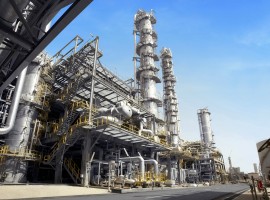The oil and gas upstream sector deals with the exploration and production (E&P) of the world’s hydrocarbon wealth. A global key concern to the oil and gas leaders is sustainability and the safety of staff, assets and the environment. Egypt Oil and Gas interviewed health, safety, and environment (HSE) specialists, in addition to asset integrity management experts to explore the effect of these fields on the upstream sector and how can they lead to a sustainable future.
Ensuring Safety during in the Upstream Sector
The upstream activities have a high-risk nature if proper HSE measures are not implemented. HSE failure “can not only put an employee out of work for a while and impact their quality of life; it may also damage your business’s productivity, finances, and reputation – all of which can be difficult to recover from,” Nabil Elbaz, Offshore HSE Manager at A Subsea 7 Company, told Egypt Oil & Gas.
Elbaz noted that the safety culture starts from leadership. He stated that the oil and gas sector “should develop a strong safety culture at site, and start with leaders. Supervisors and managers have to set an example for everyone else. They demonstrate the model for safe behavior that everyone else will follow based on the safety program to transform a company’s safety culture.”
In addition, Elbaz pointed out that the Occupational Safety and Health Administration (OSHA) “passed a regulation that prohibits employers from discouraging workers from reporting injuries and illnesses and also requires employers to inform their employees of their right to report any incidents.”
Moreover, Elbaz highlighted the importance of training when it comes to safety. “Every new safety protocol will require a training session or workshop. However, when you are introducing a new major practice or policy, training may be needed.” He further encouraged “leveraging existing communications devices “such as advanced location tracking, automated check-ins, and panic buttons.”
Upstream safety does not only revolve around physical injuries. “Due to the widespread isolation and loneliness of the pandemic, safety managers are talking more about how to support the mental and emotional well-being of workers, which impacts their physical safety as well as the productivity and caliber of their work,” according to Elbaz.
The upstream business does not only require the safety of people but the high integrity of assets. “There is a link between asset integrity management (AIM) and HSE, especially around Management of Change, as this has a direct impact on personnel and or staff and it normally needs to have input from both teams. However, the management of asset integrity is not a safety process, AIM’s main effort is in establishing the condition of the assets and assisting in the establishment of ongoing safe operating limits for each individual asset and the plant as a whole,” Patrick Gill, Former Asset Integrity Manager at Belayiem Petroleum Company (Petrobel), told Egypt Oil & Gas.
Therefore, it is crucial to maintain AIM for the upstream business to go on. “Since AIM aims into enhancing the reliability of the most important and critical equipment and elements safety functions in any field, it directly affects the upstream industry by providing and maintaining safe operations. Moreover, it plays a key role in the asset management process leading to optimizing the use of the resources assigned for maintenance and inspection,” Muhammad Ismael Sallam, Asset Integrity Department Manager Petrobel, told Egypt Oil & Gas.
Challenges & Sustainability in the Upstream Sector
Although the upstream sector revolves around production, operators cannot ignore the challenging world around them. “The world is evolving rapidly, with the global population expected to rise nearly 30% by 2050. So are the challenges, harmful emissions chief among them. And hence, so must the solutions,” Elbaz stated. Therefore, the oil and gas sector is keen to preserve the environment while it maintains growing production.
HSE and AIM engineers are hindered when the sustainability culture is not adapted in leadership positions. “The main challenge that faces asset integrity engineers is the lack of support from senior management. This lack of support can be budgetary constraints; however, it is usually a total lack of understanding by senior management, they always assume that asset Integrity equates to QC (quality control), and is therefore considered an obstacle to maximizing production, when in reality AIM, if supported is a very powerful tool to ensuring long term maximum production,” Patrick explained.
Additionally, applying HSE standards does not decrease production. “If the Company fails to recognize the importance of health and safety, the business may face a decrease in productivity and an increase in staff turnover,” Elbaz pointed out.
While HSE contributes to the sustainability goals relate to emissions and climate change, AIM also ensures that the upstream industry is sustainable. AIM “decreases the failures of the assets which increase their lifetime. Furthermore, decreasing the failures and loss of control of the assets leads to decreasing the implications on the people and their environment,” Sallam explained.
Following HSE standards and ensuring asset integrity is very effective for the development of the upstream sector. As experts discussed, it does not hinder production. On the contrary, following these measures guarantees the safety and sustainability of the oil and gas industry, which is profitable to the investors in a safe and environmentally friendly way.








